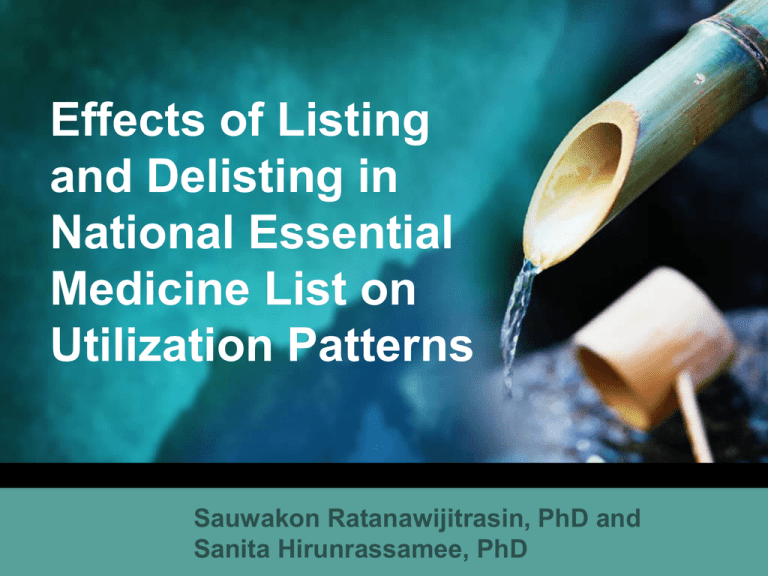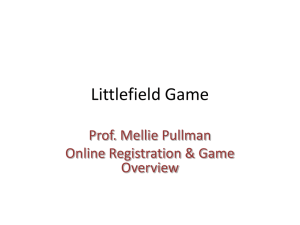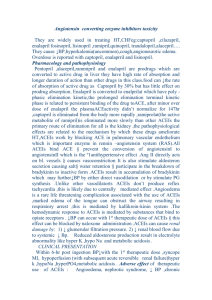811-Ratanawijitrasin-_b
advertisement

Effects of Listing and Delisting in National Essential Medicine List on Utilization Patterns Sauwakon Ratanawijitrasin, PhD and Sanita Hirunrassamee, PhD Background pharmacological category Lipid-regulating drugs Dugs affecting the renin-angiotensin system Drugs used in the control of epilepsy Generic NEML 2004 2008 Simvastatin Atorvastatin Rosuvastatin Enalapril maleate Losartan potassium Valsartan Sodium valproate Topiramate Levitriacetam Gabapentin Pregabapentin Objective To examine the effects of NEML listing and delisting on the utilization patterns comparing: Delisted drugs with remaining or Added medicines “non-essential” medicines (NEM- not listed in both NEML editions) in the same pharmacological category NEML: National Essential Medicine List Methodology 3 groups of Medicine 1. Statins 2. ACEIs 3. Antiepileptics OPD e-dispensing databases 9 government hospitals Statistics Segmented Regression Analysis of interrupted time series data Data Source: Dispensing data collected for "Data management for systematic monitoring of drug utilization and policy project"--a collaboration between IMRTA and PharReD Foundation. Methodology (cont.) 14 mo Before 2008 10 mo NEML After 24 months time-series data points Methodology (cont.) Comparison •Statins - 130,287 pt •ACEIs & AIIAs - 85,349 pt •Anti-epileptics 31,739 pt 3 major health insurance schemes •CSMBS •SSS •UC RESULTS Utilization Patterns across Health Insurance Scheme Conclusion NS No statistical significant changes in the utilization patterns of the listed, delisted and non-listed medicines occurred after the introduction of the 2008 NEML Sig . Discrepancies in utilization were found among patients in different health insurance systems. Ans. It appears that health insurance policy exerts greater influence on utilization patterns than essential medicine policy. Acknowledgement: Institute of Medical Research Technology Assessment (IMRTA) and Pharmaceutical System Research & Development Foundation (PharReD Foundation)






